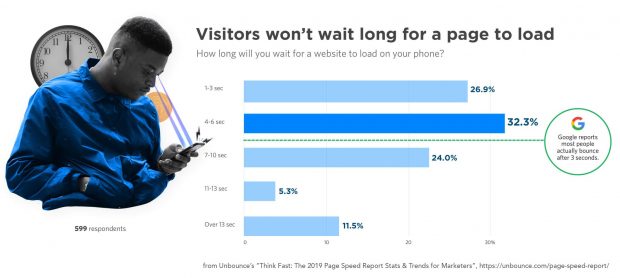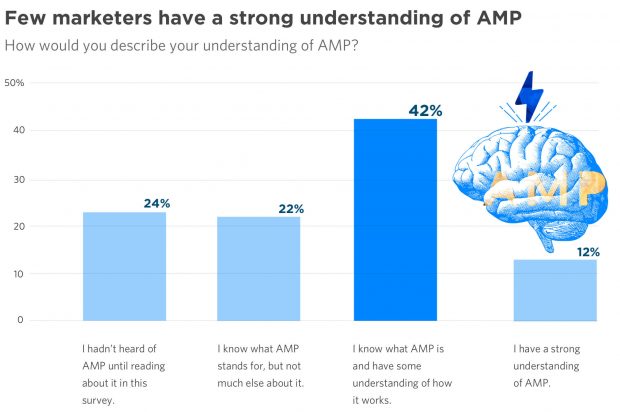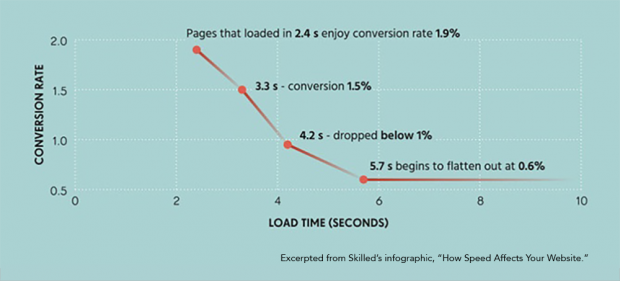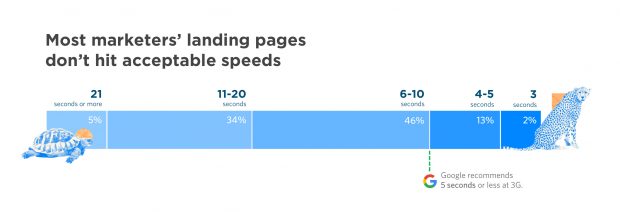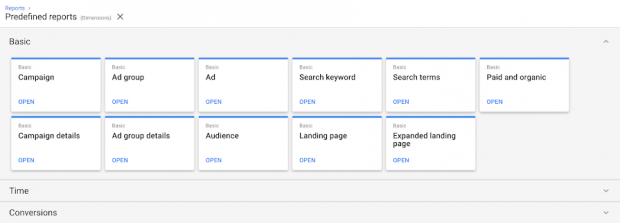Google has been focused on speed for a while. Recently, they’ve started nudging pay-per-click advertisers to focus on it, too.
In the last few years, AMP (Accelerated Mobile Pages) markup has expanded from a way to improve website speed in general into a way to improve landing page speed and how quickly ads load on publishers’ pages.
It’s time for pay-per-click marketers – those who use Google Display Ads, in particular – to take notice.
But before we get too deep into how AMP Ads work and how ppc marketers can use them, let’s step back and put this focus on speed into context.
Why Speed Matters
As traffic from mobile users has grown (and now surpasses traffic from desktops), Google has made several significant pivots.
The most significant change was when Google’s search algorithm shifted to what’s often referred to as the “Mobile First Index.” This started back in early 2018. One primary effect of rolling out the mobile-first index was that “beginning in July 2018, content that is slow-loading may perform less well for both desktop and mobile searchers.”
Any website developer or marketer who had been paying attention to SEO already knew about the rise of mobile. They understood how critical it was (and is) to think mobile-first. But getting that notice about Google rolling out the mobile first index made it all even more clear: Get mobile-friendly – and fast.
Even before the mobile-first index began rolling out, Google was implementing other ways to deliver a better experience for mobile users. Namely, it was focusing on speed. Mobile users demand speed above anything else. If a page doesn’t load within 3 seconds or less, most mobile users will bounce.
AMP (Accelerated Mobile Pages) markup is one way to deliver that speed.
What Is AMP?
You may have heard of AMP (Accelerated Mobile Pages) in the context of building website pages. AMP is a fairly new subset of HTML that allows pages to load significantly faster than standard HTML pages.
If you haven’t heard of AMP before, or if you’ve heard of it but you’re a little murky on how it works, you’re not alone. A recent survey found that 22% of marketers hadn’t even heard of AMP until they were asked about it. Only 12% of them said they had “a strong understanding of AMP” – and that was only in the context of webpages, not including the new developments with Google Display Ads.
Given how few marketers understand AMP, it’s not too surprising they aren’t implementing it. Only 22% of marketers have implemented AMP in some capacity according to the study.
This is a bigger missed opportunity than it might initially appear to be, especially if you care about conversions.
That’s because improving website speed (and landing page speed) is the single best way to increase conversions. It’s been estimated that conversion rates drop 7-20% per second for every second a user has to wait for a page to load, whether it’s on a desktop or a mobile device.
If you’re a pay-per-click marketer, this matters. You have to maximize conversions. Even a 10% lift in conversion rate for a landing page can make the difference between a ppc campaign that’s profitable and one that’s not.
Given that, it’s surprising how slow most landing pages are.
According to a study from Unbounce, “85% of participants’ landing pages were slower than Google’s recommendation of 5 seconds or less at a 3G connection.”
If you’re not sure how fast your website is, or how quickly your landing pages load, Google has a great tool called “Test My Site” that tests the speed of your website and your landing pages. It will even give you an estimate of how much money your company is losing every month due to slow pages.
Once you know what your site’s slow pages are costing you, you may be more motivated to change things than you were before. And so…let’s talk about one key solution to slow landing pages, poor conversion rates, and unprofitable ppc campaigns: AMP landing pages and AMP Ads.
A Brief History of AMP Ads and How They’ve Evolved
AMP Ads started about two years ago when Google let advertisers “use fast-loading AMP pages as the landing pages for your search ads.” At the same time, Google began “speeding up ads served across the Google Display Network by using the same technology that makes AMP pages so fast.” So, we had two things going on: faster landing pages and ads that loaded faster.
Google framed the new AMP ads as a way to bring AMP speed (which had previously only been used for organic search results) to landing pages. As Google described it:
“The new AdWords beta brings the performance benefits of faster mobile pages to search campaigns. Now, when advertisers link their search ads to AMP landing pages, consumers will get the fast mobile web experiences they’ve come to expect from AMP pages on Google Search.”
A few months later, around May of 2017, Google also began automatically converting “a significant amount” of display ads to AMP. The new ads were loading up to 5 seconds faster than regular display ads with no visible difference in the creative quality.
This allowed one of Google’s test publishers to earn “23% more revenue on their AMP pages compared to non-AMP pages, despite having fewer ads on their AMP pages.” There was decent inventory for the faster ads, too – over 100 ad networks were offering the faster ads. So publishers were happy.
Part of the improvements for ad serving were thanks to something called “Fast Fetch,” which is “a faster mechanism for loading ads on AMP pages. Fast Fetch renders ads up to 2.7 seconds faster compared to the legacy mechanism.” That means there is no more waiting for ads to load even after a page has loaded. That makes advertisers pretty happy, too.
You can see a video that compares how AMP and non-AMP landing pages load here.
More Recent Developments in AMPHTML Ads, AMP Story Ads, and Other Cool New Things
These new AMP ads are technically “AMPHTML ads.” So what’s that, exactly? It’s just an ad written in AMP HTML. As the AMP website explains, ”A valid AMPHTML ad does not contain arbitrary JavaScript.”
If you want to test AMP ads, there are four ways to do it:
- You can work with an authorized buyer that allows targeting only AMP or regular inventory;
- You can use Google Ads to target inventory in the Google Display Network;
- You can buy ad space from publishers via Google Ad Manager; or
- You can use Display & Video 360 to deliver AMPHTML ads to AMP pages.
Google’s help pages also say “you can create AMPHTML ads for image, custom, and third-party creative types directly in Ad Manager, with support for more creative types coming in the near future.” AMP ads work on both AMP pages and non-AMP pages and can be viewed on desktop and mobile devices, so there’s no limitation on where your ads can show.
You can also vary the formats of your AMP ads. They can be made in “carousel, parallax, and lightbox” creative formats. You can see what each one of those formats looks like on this page.
If you want a college-course level understanding of Google’s display ads, their “Google Ads Display” course in Google’s Academy for Ads will do. It “covers basic and intermediate concepts, including best practices for creating, managing and optimizing Display campaigns.”
You can also try out AMP Story Ads, which came out of beta late last year. They can be managed within the Google Ads Manager.
The new Story ads use the open source AMPHTML ad framework. If you’re interested in testing a few of these Story ads, the documentation for how to create them is here and there’s a live example of one here.
Reporting for AMP Landing Pages
A key part of knowing if AMP landing pages are working for you is, of course, to look at your Google Ads reports. And Google has a new landing page report (previously known as the “final URL report” that will give you this information. The new pre-formatted reports have three new columns for “Mobile speed score,” “Mobile-friendly click rate,” and “Valid AMP click rate.”
There’s another help page about AMP landing page reports that goes into even further detail.
Conclusion
If you haven’t been prioritizing speed for your ppc landing pages, it’s time to start. AMP landing pages are an excellent way to do it. But you should also invest in faster creative: AMPHTML ads have many different formats even now, and more are likely to be on the way.
Because so few marketers are experimenting with AMP (even just for standard website pages), there’s a real opportunity here for a competitive edge – and possibly some higher ROI for your Google Display Ads campaigns.
IMAGES
- Unsplash, Ahsan Avi.
2-3, 5: Think Fast: The 2019 Page Speed Report by Unbounce.

